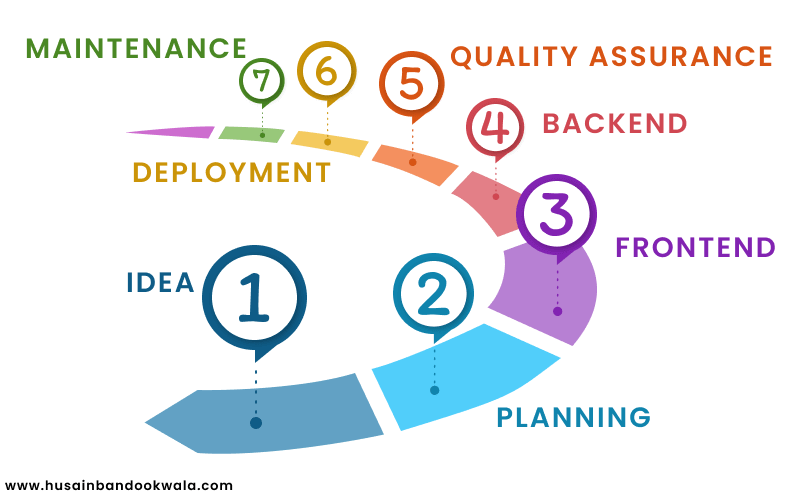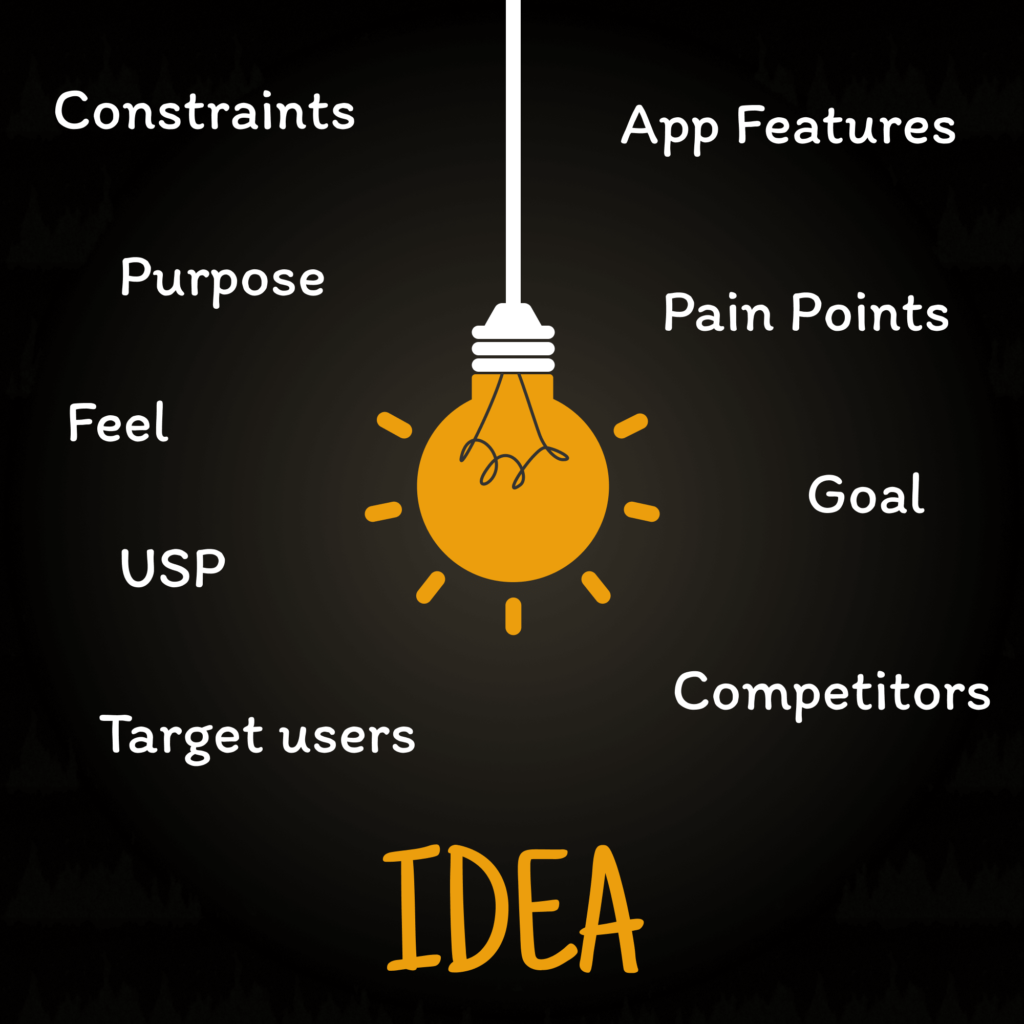
You hold a brilliant idea for a new app or website. Now you want to turn it into a reality. What will be the next step?
Yes, you need to hire software developers. But what developers to hire – backend or frontend or both? Under what technology stack? Also, what do each of them do? If you don’t know what your developers do, you won’t be able to make the right choice.
For a complete software project, you’ll need full-stack developers who handle everything from interface to deployment. However, the process involves challenges and complexities that demand attention for successful product delivery. Read on to explore everything in the middle.
What is Full Stack Development
Full stack development involves building software applications that combine multiple layers of technology. It involves many skills and tools covering the entire software development life cycle (SDLC). Simply put, full stack developers are responsible for designing, creating, and maintaining frontend layer and backend logic and integrating them for seamless functionality.
As the name says – “full stack” – the developers have a more vast technology stack than other specific language developers. The most commonly used technologies and tools in full-stack development are HTML, CSS, JavaScript, Bootstrap, Python, PHP, Ruby on Rails, Angular, React, Node.js, jQuery, C#, SASS, MySQL, MongoDB, etc. Here’s how the process starts.
To simplify understanding the complete process, let’s take an example where Jane is our skilled full-stack developer building a chatbot that helps users book flights and hotels. We will demonstrate her work under each process to make the article more digestible.
#1 Understanding the Idea
The most important single aspect of software development is to be clear about what you are trying to build.
-Bjarne StroustrupIt’s all your start that defines your end product. A good full-stack developer can visualize the end product entirely in his imagination, even before working on it. He needs to gather requirements, analyze user needs, define features and functionalities, create user stories and use cases, etc. This helps him plan and structure his application according to his vision and expectations.

Jane started working on her project by researching the travel industry and user pain points. After interviewing potential users and studying booking platforms, she outlined the chatbot’s scope and unique features.
Scope:
- Simplify user experience
- Minimize booking complexities held by traditional platforms.
Priority Features:
- Smooth interaction with natural language processing,
- Personalized recommendations,
- Real-time flight and hotel info,
- Secure payments,
- Booking modifications and cancellations.
#2 Planning and Architecture
After understanding your idea thoroughly, the next step for your full-stack developer is to plan and architect your web application. It involves choosing the best stack for your project, designing the database schema and API endpoints, deciding on the coding standards and conventions, setting up the development environment and tools, etc.

Following client feedback, Jane structured the chatbot’s architecture. With meticulous planning, Jane developed a robust, organized, and scalable chatbot codebase. She crafted conversational flow, user prompts, and responses. Notable plans include –
- Choice of the scalable stack: Node.js, React, Express.js, GraphQL, and Dialogflow.
- Integration of advanced AI model GPT-4 for human-like interactions.
- Thoughtful database schema design using Amazon DynamoDB.
- Integration of API endpoints following RESTful principles.
- Implementation of coding standards, like HTTP methods and JSON format.
- Set up of development environment: Visual Studio Code, GitHub, npm, and debugging tools.
#3 Frontend Development
Frontend development is creating the user interface of your software applications. It involves coding your web pages’ layout, style, and interactivity. Your full-stack developer will use suitable frontend frameworks to build responsive, dynamic, and user-friendly screens.
Some popular and modern frontend technologies and tools are React, Angular, Vue.js, JQuery, Bootstrap, HTML, CSS, Semantic-UI, Svelte, etc. Full-stack developers often possess knowledge of more than one framework.
Jane successfully executed the chatbot’s frontend development, starting from functional prototyping under Figma to utilizing React framework for web and mobile interfaces. Her HTML and CSS skills brought intuitive UI/UX, ensuring cross-browser compatibility and responsiveness. She valued user feedback and followed best practices for an exceptional chatbot experience.
#4 Backend Development
Backend development involves coding the server-side logic and functionality of your software application. It includes using programming languages and frameworks to handle frontend requests and interact with the database. Backend development also involves utilizing tools to manage and optimize the server.
For effective development, Full Stack developers should have good knowledge of backend languages and frameworks like Django (Python), Laravel (PHP), Java, C#, Node.js, etc. Moreover, they should have proficiency in various popular databases like MySQL, MSSQL, MongoDB, Firebase, etc.
With Node.js expertise, Jane managed the chatbot’s backend. She integrated APIs, ensured input validation, and used a cloud database for secure data management. Following best practices, she prioritized user data security throughout the process.
#5 Testing and Quality Assurance
Testing assures your app meets quality standards and client expectations. It involves detecting and fixing errors, ensuring functionality, usability, performance, and security. Full Stack developers prioritize continuous, agile testing for robust results.
Software Testing includes tools like Selenium (web UI testing), Mocha (JavaScript), PyTest (Python), PHPUnit (PHP), RSpec (Ruby), JUnit (Java), etc., for efficient automation and streamlining of the testing process.

Jane ensured a flawless chatbot through rigorous testing. Using Jest and Mocha, she conducted unit, integration, and end-to-end tests. Jane checked functionality, performance, and compatibility across various platforms.
She paid particular attention to user input validation, response accuracy, and seamless integration with external APIs. Through systematic testing and debugging, Jane ensured the chatbot provided a seamless, error-free booking experience.
#6 Deployment and Maintenance
In this phase, Full Stack developers ensure your website is live and accessible. It involves uploading your code and files to a web server or a cloud platform that can host your web app. They also use tools to monitor and update the site for ongoing maintenance.
After passing quality tests, Jane deployed the chatbot on AWS (Amazon Web Services) using Docker for scalability. She integrated tools like New Relic for performance monitoring, identifying bottlenecks, and ensuring regular updates. This boosted chatbot availability, performance, and user experience in the long run.
Wrap-Up
The full stack development requires a combination of technical expertise, meticulous planning, and efficient execution. From understanding the idea to deploying a functional and user-friendly application, the journey involves various stages that demand attention to detail and a commitment to delivering a high-quality product.
A skilled full-stack developer like me can effectively navigate your development process, bringing your vision to life. Whether it’s a web application, mobile app, or custom software, I’m here to help.
Contact me today to discuss your project requirements, and let’s embark on a journey of creating exceptional digital solutions together.